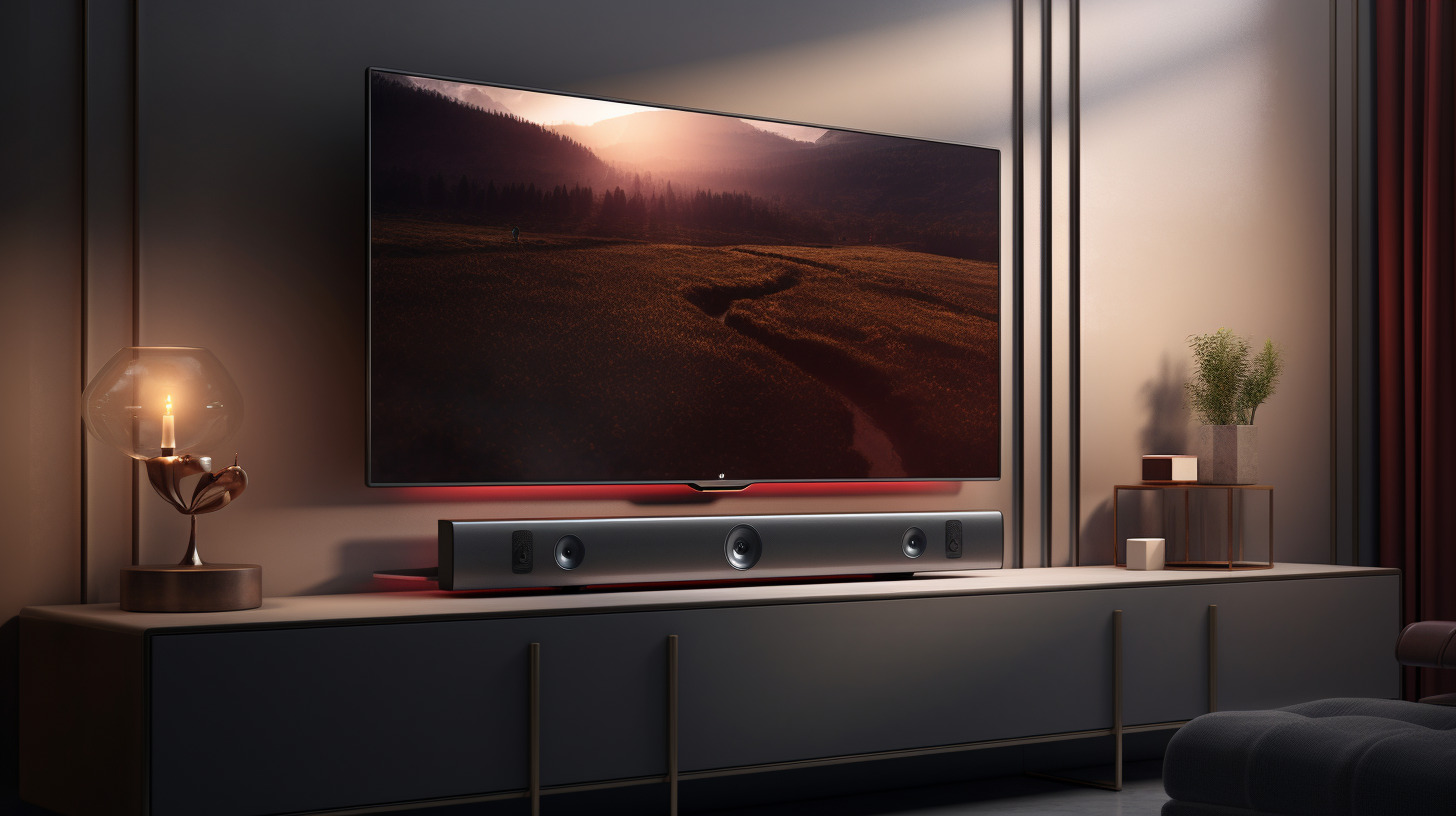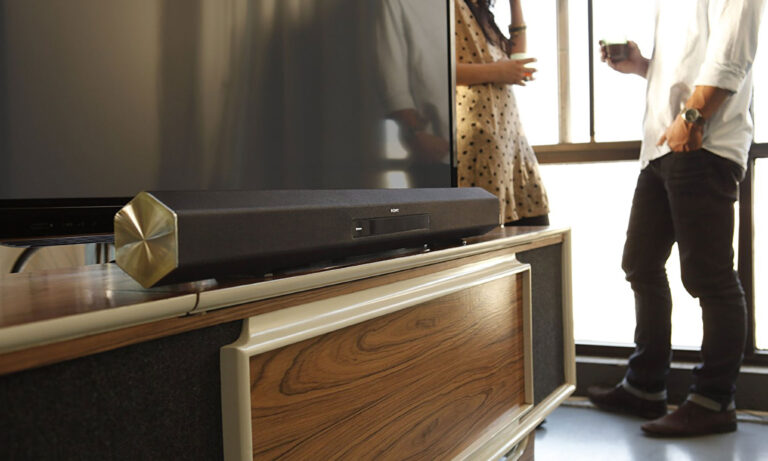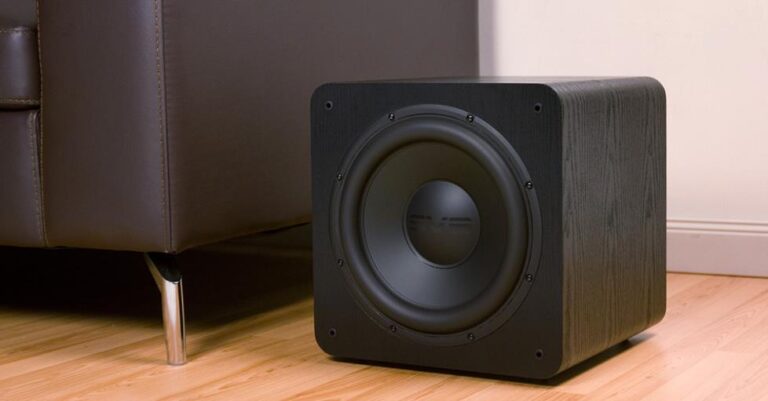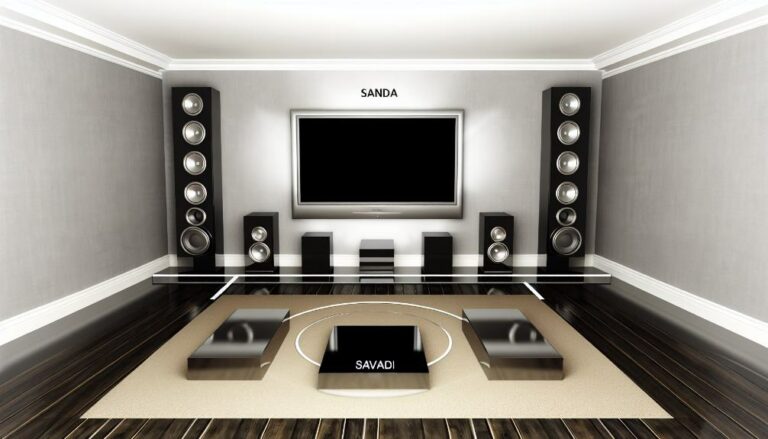Are you tired of struggling with messy wires and complicated audio setups? Look no further! In this article, we will explore the various optical audio connectivity options available for your soundbar.
Discover the benefits of using optical audio and learn how to set up and configure it on your soundbar easily.
Say goodbye to tangled cables and hello to a seamless audio experience that will make you feel like you truly belong in the world of immersive sound.
Key Takeaways
- Optical audio connections provide superior sound quality with uncompressed and lossless transmission.
- Optical audio is compatible with a wide range of devices and supports multi-channel audio formats.
- Optical audio connections are immune to electromagnetic interference and are lightweight and easy to install.
- Troubleshooting common issues with optical audio includes checking cable connections, verifying audio settings, testing with another device, and updating firmware for compatibility and performance improvements.
Types of Optical Audio Connections for Soundbars
When it comes to connecting your soundbar to your audio source, there are two main options: optical audio and HDMI audio.
Optical audio connections, also known as Toslink or S/PDIF, use fiber optic cables to transmit audio signals digitally. This method ensures high-quality sound and eliminates interference.
In contrast, HDMI audio connections transmit both audio and video signals through a single cable. While HDMI offers convenience, it may not be necessary if you only want to enhance your audio experience.
When it comes to compatibility, optical audio connections can work with a wide range of devices, including TVs, gaming consoles, and set-top boxes. However, it’s important to check the compatibility of your specific devices to ensure seamless integration.
Understanding the Benefits of Optical Audio Connectivity
When connecting your soundbar to your audio source, it’s important to understand the benefits of optical audio connectivity. Optical audio offers several advantages over HDMI and RCA connections:
- Superior sound quality: Optical audio provides uncompressed and lossless audio transmission, resulting in high-quality sound reproduction. This is especially noticeable when listening to music or watching movies with surround sound.
- Immersive audio experience: Optical audio supports multi-channel audio formats, such as Dolby Digital and DTS, allowing you to enjoy a more immersive audio experience with your soundbar.
- Electromagnetic interference immunity: Unlike RCA connections, which are susceptible to electromagnetic interference, optical audio is immune to such interference, ensuring a clean and uninterrupted audio signal.
- Simplicity and versatility: Optical audio cables are lightweight and easy to install. They also support longer cable runs without signal degradation, making them suitable for various audio setups.
Understanding the benefits of optical audio connectivity can help you make an informed decision when connecting your soundbar to your audio source.
How to Set Up and Configure Optical Audio on Your Soundbar
To set up and configure optical audio on your soundbar, you will need to follow a few simple steps. First, ensure that your soundbar and TV are both turned off. Next, locate the optical audio input on your soundbar and connect one end of the optical cable to it.
Then, locate the optical audio output on your TV and connect the other end of the cable to it. Once the physical connection is established, turn on your TV and soundbar. Go to the audio settings on your TV and select the optical audio output as the audio source.
Finally, adjust the audio settings on your soundbar to optimize the sound quality. This may include adjusting the volume, equalizer settings, or selecting audio modes. Refer to your soundbar’s user manual for specific instructions on optimizing the audio settings.
| Steps to Set Up and Configure Optical Audio on Your Soundbar |
|---|
| 1. Turn off your soundbar and TV. |
| 2. Connect one end of the optical cable to the soundbar’s optical audio input. |
| 3. Connect the other end of the optical cable to the TV’s optical audio output. |
| 4. Turn on your TV and soundbar. |
| 5. Go to the audio settings on your TV and select the optical audio output. |
| 6. Adjust the audio settings on your soundbar to optimize the sound quality. |
Troubleshooting Common Issues With Optical Audio Connections
If you encounter any issues with the optical audio connection on your soundbar, try the following troubleshooting steps:
- Check the cable: Ensure that the optical cable is securely connected to both the soundbar and the audio source. Sometimes, a loose connection can cause audio issues.
- Verify the settings: Confirm that the audio settings on both the soundbar and the connected device are properly configured for optical audio output. Incorrect settings can lead to no sound or distorted audio.
- Test with another device: Connect a different audio source to the soundbar using the optical cable to determine if the issue lies with the soundbar or the original audio source. This will help isolate the problem.
- Update firmware: Check if there are any available firmware updates for your soundbar. Updating the firmware can often resolve compatibility issues and improve overall performance.
Exploring Alternative Audio Connectivity Options for Soundbars
If you’re looking for other ways to connect your soundbar to your audio source, there are several alternative audio connectivity options available. In addition to optical audio connections, soundbars also offer wireless connectivity and HDMI audio options. These options provide flexibility and convenience in setting up your soundbar system.
Wireless connectivity allows you to connect your soundbar to your audio source without the need for cables. This can be done through Bluetooth or Wi-Fi, depending on the capabilities of your soundbar. With wireless connectivity, you can easily stream music or other audio content from your smartphone, tablet, or computer directly to your soundbar.
HDMI audio options provide high-quality audio transmission through a single HDMI cable. This allows for both audio and video signals to be transmitted from your audio source to the soundbar, simplifying the setup process. HDMI also supports advanced audio formats such as Dolby Atmos and DTS:X, providing an immersive audio experience.
Consider these alternative audio connectivity options when setting up your soundbar system to enhance your audio experience and create a seamless connection between your soundbar and audio source.
| Connectivity Option | Description |
|---|---|
| Wireless | Connect your soundbar to your audio source without cables through Bluetooth or Wi-Fi. |
| HDMI Audio | Transmit high-quality audio and video signals from your audio source to the soundbar using a single HDMI cable. |




